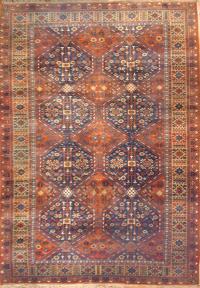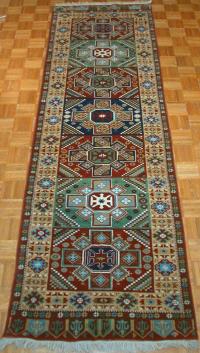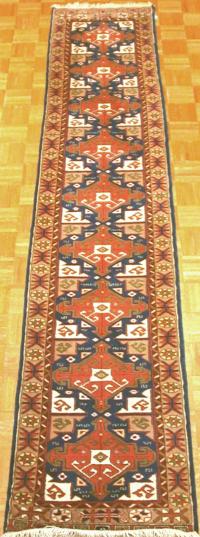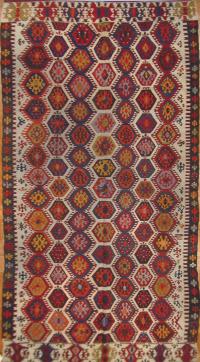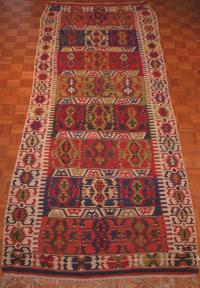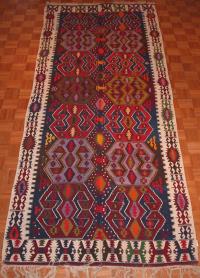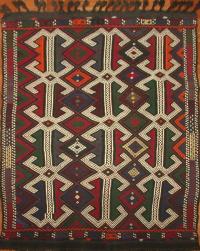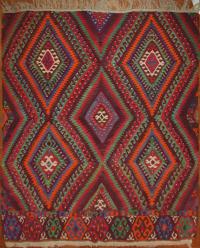Konya
"(Iconium, Conia). One of the most historical urban sites in Turkey. Established as the Seljuk capital in 1077; later, occupied by the Karamanogullari until 1467. A group of carpets and fragments discovered in the Alaeddin Mosque by the Swedish art historian F.R. Martin in 1905, have been attributed to the Seljuk period (thirteenth to fourteenth century), although this dating is not universally accepted. Also the Mevlana Museum, once the leading Dervish monastery in Anatolia, houses some interesting and important carpets. Has remained one of the leading centres of carpet weaving until the present day, especially well known for its prayer rugs and kilims. Marketing centre for rugs woven in the surrounding area. The name 'Konya' has become almost generic for a wide range of central Anatolian weavings which cannot be attributed with greater accuracy." - from Oriental Rugs Volume 4 - Turkish by K.Zipper & C.Fritzsche
| 8ft. 0in. x 12ft. 1in. | 2ft. 9in. x 10ft. 1in. | 3ft. 5in. x 10ft. 11in. |
| 2ft. 2in. x 10ft. 10in. | 4ft. 8in. x 11ft. 1in. | 3ft. 5in. x 4ft. 5in. |
| 5ft. 0in. x 12ft. 6in. | 5ft. 5in. x 13ft. 11in. | 4ft. 11in. x 12ft. 2in. |
| 3ft. 6in. x 4ft. 9in. | 5ft. 3in. x 5ft. 9in. | 4ft. 7in. x 11ft. 2in. |

